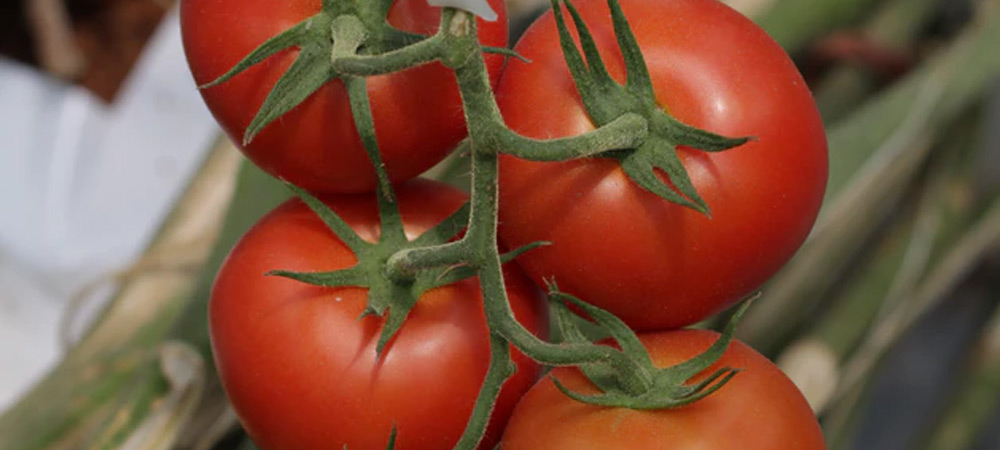Why Do Plants Grow Faster in a Greenhouse?

Imagine a year with the perfect amount of sunlight, warmth, humidity, darkness, and airflow for a given plant. What would that plant look like by the end of the season? Great, right? Well, the natural environment is never perfect, even during excellent growing years. What a greenhouse does, is take the existing outdoor conditions and move them a bit more toward perfect. If it’s too cold outside, the greenhouse can provide and retain a bit more heat. If it is windy, it provides shelter. If torrential rainfall is threatening your outside space, a greenhouse can provide shelter from that, too. On top of these benefits, the interior of a greenhouse is usually higher in carbon dioxide, has fewer pests, and higher humidity.
Now this artificial environment can go too far too, so it is important to keep an eye on things. Negligence can mean overheating of your plants, greater chance of disease and plant stressing, drought conditions, etc. YOU are in much greater control, for better or for worse. Let’s make sure it’s for the better with a few useful tips.
Need a new greenhouse? Buy one online with free UK delivery here.
How Greenhouses Contribute to Growing Speed
Temperature
Most of the plants we are talking about grow best around 25 degrees Celsius. This is because that is the optimum temperature for photosynthesis to occur. Under conditions of higher carbon dioxide concentrations, that ideal temperature can be increased to around 28 degrees Celsius. For a typical greenhouse then, in which some carbon dioxide enrichment can be expected, the ideal should hover between 25 and 28 degrees Celsius, for most plants.
Temperatures won’t fluctuate within a greenhouse as much as they will outside, with one exception. When the sun is out, the air is still, and the greenhouse hasn’t been ventilated, then temperatures inside the greenhouse can rocket up very quickly. Be sure to keep an eye on the weather and adjust your greenhouse before the heat has a chance to become a problem.
Drops in temperature won’t be as severe over a single day (in most cases), but seasonal drops in temperature can be enough to stress or even kill off plants in a greenhouse. In such cases, a little added heat can go a long way. Placing a bucket of heated water in the greenhouse overnight can keep the temperature above frost levels, as can a low-power heater left on during those colder nights.
Keep the weather in mind and these simple adjustments ready to go, and you’ll be able to stay ahead of the weather and make sure your plants are happy and healthy, growing strongly and providing a bountiful harvest when it comes time to reap the rewards of your work and diligence.
Do you need a greenhouse heater? Browse our range here.

Light
Temperature isn’t the only thing plants need, though. Sunlight is the fuel that drives photosynthesis and allows the plants to create the food we will eventually eat. Without enough light, there will be no crops.
Most plants need about eight hours of decent sunlight. During the summer months, this is no problem, as the sun is up early and lingers long, setting late into the evening or even night. In fact, there are times during the summer when you might want to block some of the sunlight from entering your greenhouse to keep temperatures down (perhaps using a 40% shade net), and that’s okay: there will still be plenty of ambient light during the less harsh hours of the day to fuel your plants up. It is during the winter that problems may occur.
During the winter, day are shorter and sunlight at a lower angle, so plants are struggling to get all the light they want to begin with. Add in some insulation for heat retention, some fallen leaves or grime on greenhouse panes, and the long shadows cast by buildings and trees, and you could have plants crying out for a little more light. You may want to supply this, depending on your individual conditions, using an artificial light source. Supplementing the scant daylight hours with three or four hours of artificial light can make a huge difference to your crop yields.
Humidity
Humidity is another factor that can have profound effects, but is often overlooked. Plants need a constant supply of moisture, and much of this is absorbed through the air. A high humidity area will allow plants to retain much more of their inner moisture as well; this decreases ‘transpiration,’ the loss of moisture through the surface of the leaves. Low humidity can cause increased transpiration, an increase in demand for groundwater, and some stressing of the plant.
The most common method of measuring humidity is to determine the Relative Humidity. Relative humidity is the amount of water the air can hold at a given time, compared to the amount it can hold at a certain temperature. Most plants like a relative humidity of between 40 and 60 percent.
The normal humidity can vary a great deal, depending on season, weather, elevation, location (such as nearness to large bodies of water or elevated land) and other factors. Normally, in dryer regions, humidity is lower in the summer months than it is in the winter months. In damp and hot regions, the summer sees higher relative humidity than the winter.
Humidity outside of your greenhouse is the Wild West, and there is no real way for you to control it. Inside your greenhouse, however, is a different story. If you are growing plants that are used to pretty high humidity, increasing the humidity in a greenhouse can really aid their ability to grow, and to grow quickly!
Of course this isn’t the case with plants that are adapted to growing in low humidity situations. For those ones, keeping the inside of your greenhouse dry is very important. In fact, this is another benefit of using smaller greenhouses: you can have two of them, and keep relative humidity high in one and low in the other, if you are wanting to grow two different types of plants with widely differing preferences.
Using a humidity controller is by far the easiest way to control the humidity in your greenhouses, but it is possible to do it manually if you prefer. Items to help out, in either case, include heaters, fans, humidifiers, dehumidifiers, vents and even a simple bucket of water!
Want to grow cucumbers? Follow our expert guide here.

Environmental Control
Using a greenhouse of any size is a great way to gain control over the environments in which your plants will be growing. While things may fluctuate a great deal outside, often to the detriment of your plants, conditions inside your controlled environment can stay close to optimal, resulting in healthier plants that grow faster, fend off pests and disease more successfully, and ultimately pay you back with a greater crop yield at the end of all of your hard (but satisfying) work. The soil will even benefit from retaining more of its natural nutrients, as it won’t be subject to the flow or runoff of rainwater.
Pest Control
Pests include a wide range of wild animals. From deer and rats, birds and squirrels, to tiny little animals like aphids and slugs, there is a huge variety of opportunistic little things that would like to benefit from your hard gardening work!
Growing plants inside a greenhouse won’t give you 100% protection for your plants, but it is pretty close. Not only are the larger creatures prevented from grazing on your tender little plants, but the smaller ones have more difficulty sensing, finding and getting access to your plants too. Using a little additional care – such as insect netting over vents and doors – can really bring down the risk of damage by invaders.
Constant Care/Attention
One of the main reasons why plants grow faster in a greenhouse is that we are there, keeping watchful eyes on what is going on, and taking care of any problems when they are still small and relatively insignificant issues. The enclosed area, use of shelving, and high visibility of plants in a greenhouse means that we spend more time inside of them, can see changes ore easily, and can more effectively adjust conditions to thwart any pests or diseases that might start to occur.
Compare this to a larger outdoor garden space. We may take a stroll through the garden, trying to spot problems while they are still small, but it is much more difficult to do. Shadows, larger areas, and the increase in places for little grazers to hide, are all factors that decrease our efficacy when we are watching over outdoor garden spaces. Yes, it is possible to stay on top of those outdoor spaces, but it is more difficult and often less effective than it is in the limited, more controlled indoor space of a greenhouse.
Want to grow a chilli plant? Learn how here.
Soil Quality
Outdoor plants tend to be more susceptible to disease and pests. The soil is exposed to more outside influences, more animals, other plants and even materials carried in on the wind and rain – but inside our greenhouses WE control the ingredients of the soil to a much greater degree. Our choices of compost, draining material, soil and additives are more in our control, and less effected by other forces of nature.
Adding disease-free soil, the right percentage of organic matter, and keeping your greenhouse in good repair can mean that, even in the midst of a disease- and pest-ridden garden, your plants can remain sheltered and isolated within your controlled growing area. This means better plant health, faster and healthier growth, and bigger yields.
Plants that don’t need much nutrition from the soil can be grown in soil that has already been used by a different family of plants. Rotating between different types of plant can allow soil to provide everything a plant needs during a growing season, all the while building up on nutrients that were used up by a different plant in the last growing season. Do this properly, and the same soil can go on producing healthy, well-fed plants for many years with very little additional food or additives needed.
Stronger Start
There are indeed many different reasons to grow plants inside the shelter of a greenhouse. Starting tender young seeds and seedlings earlier in the year, keeping more delicate plants protected from wind and rain, controlling humidity for plants with different needs and tolerances, preventing disease and barring access to pests – the list goes on and on.
In simplest terms, a greenhouse can extend the growing season in your area, allowing for earlier planting and later harvests, maximising the yield given by your plants. But there is so much more to it than that. Plan carefully – with a few useful tips from the veterans – and you can be growing and harvesting all year long, moving from season to season in harmony with the needs of the plants themselves, but always adding something to your table that comes complete with the satisfaction that you grew it, in your own garden… and few things feel as great as that!
We wish you the best in fun and delicious food, as you set out on your greenhouse adventure.
Read next: Best Vegetables for a Greenhouse
South West Greenhouses stock a whole range of greenhouses online, including lean-to greenhouses, potting sheds, and greenhouse-shed combos.
 Author:
Author: